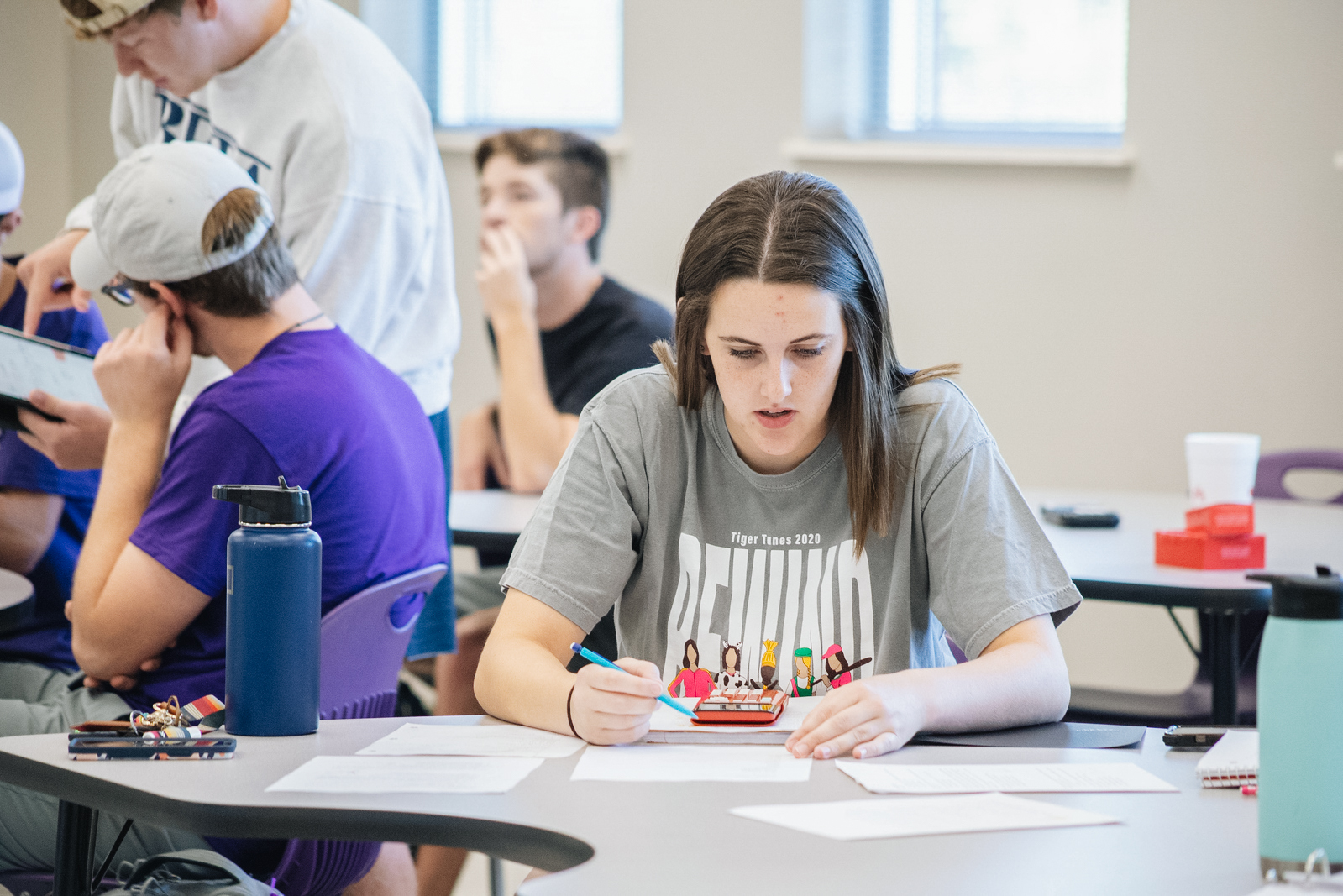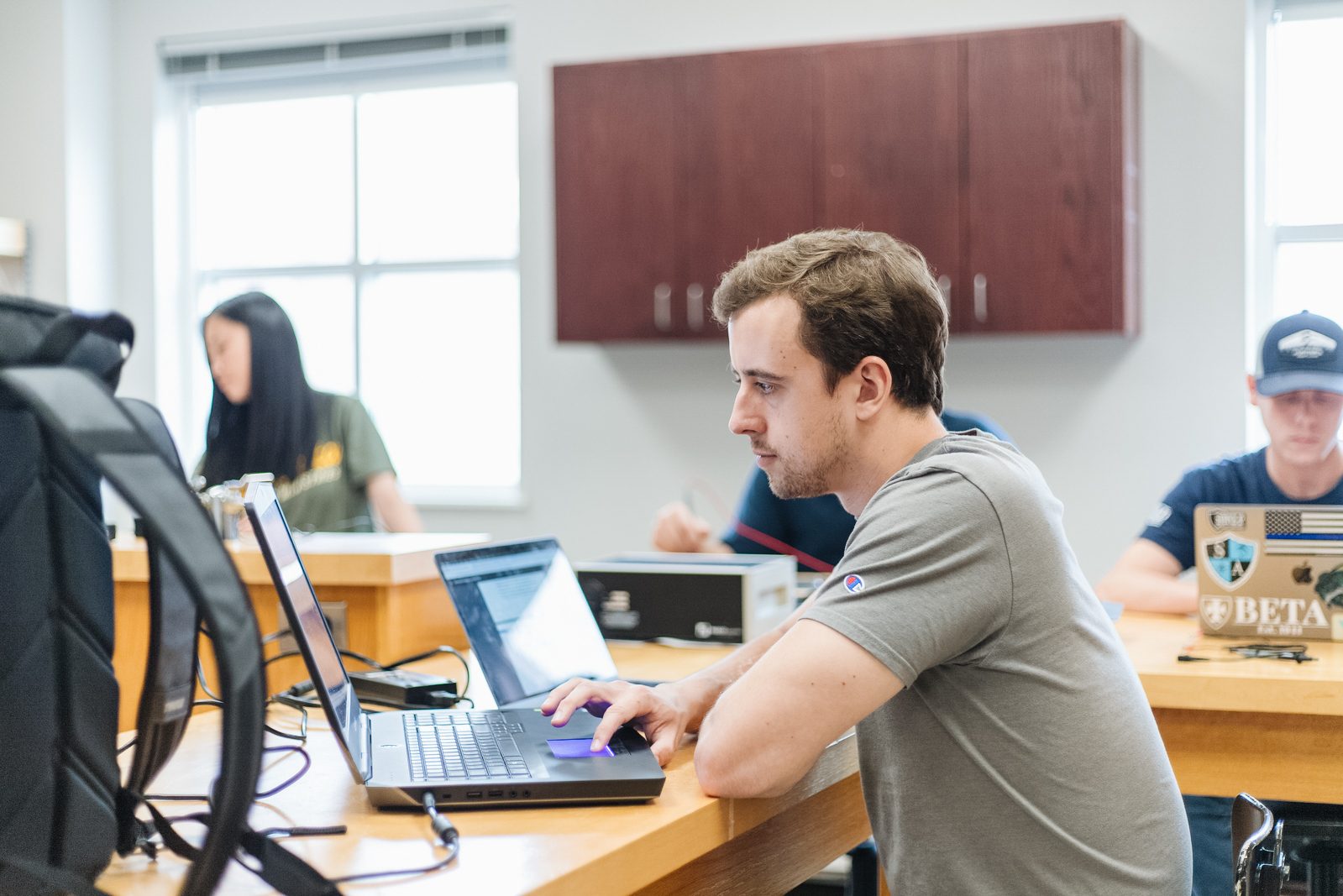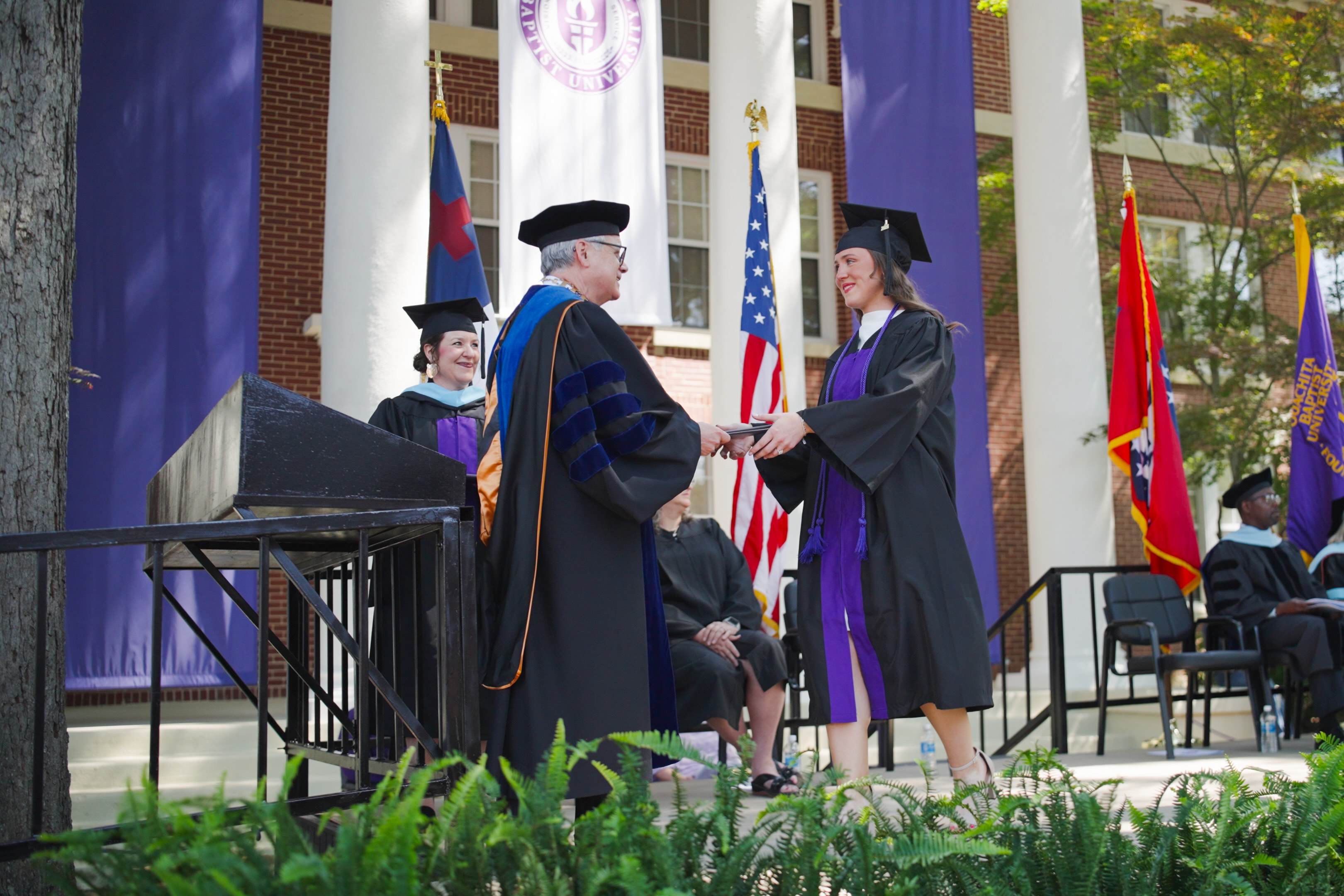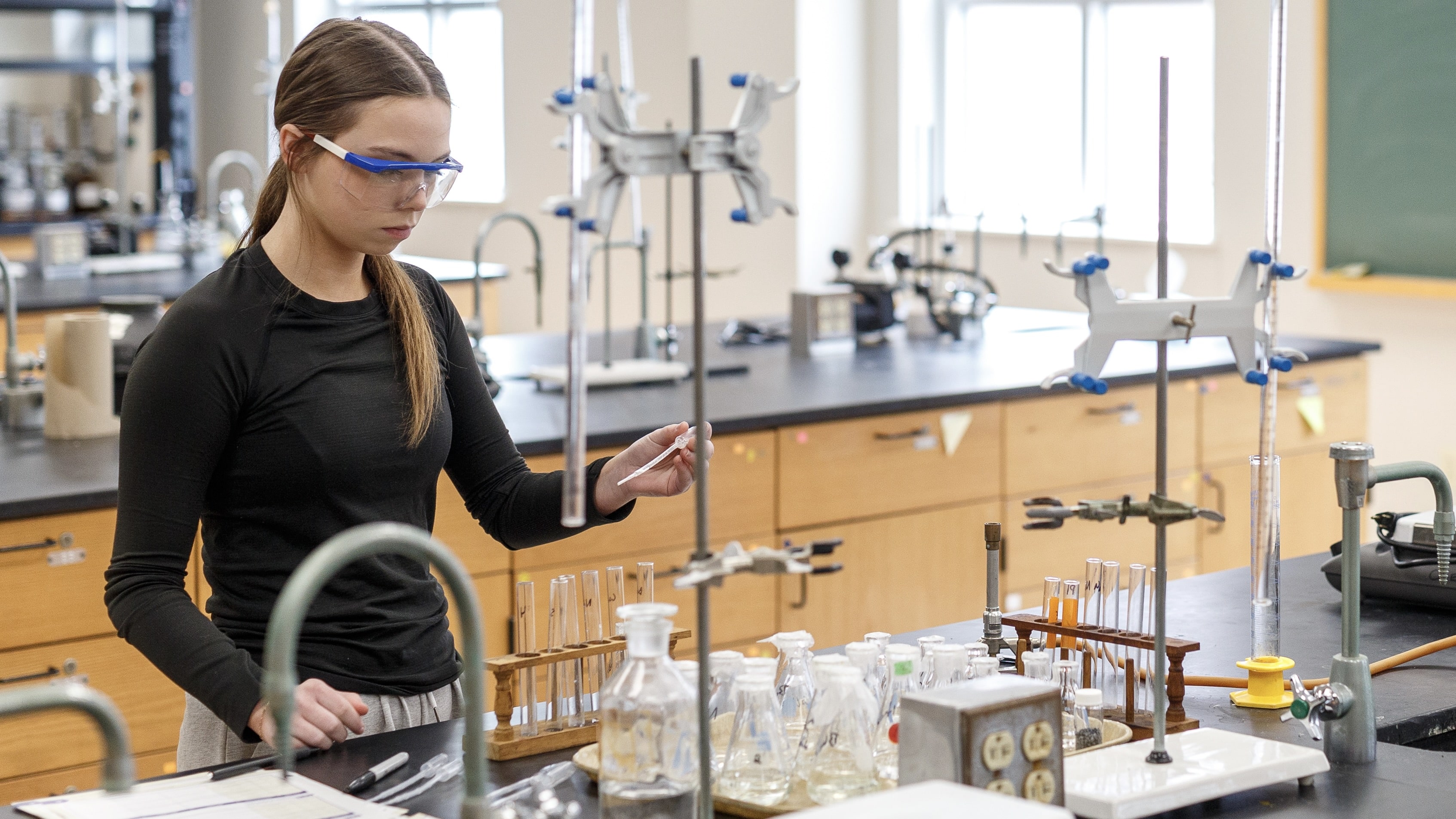Engineering: B.S.
An engineering degree from Ouachita builds on the tradition of excellence in the J.D. Patterson School of Natural Sciences, with a 4-year, fully-residential engineering program in a Christian, liberal arts setting. Ouachita's Bachelor of Science degree in engineering offers a rewarding career path with diverse opportunities, strong earning potential, and a chance to make a real difference in the world. We offer three emphases that students can choose between, based on their area of interest: civil, mechanical or a general designation that combines elements of both. Students do not have to commit to an emphasis until their 3rd year. Until then, all the courses are the same for engineering students as they learn and develop a good foundation in engineering and scientific principles.
Engineers seeks to solve real-world problems in a very systematic way, which often require a good deal of creativity, as well as a strong mathematical and scientific foundation. Often, engineers take existing solutions and determine if they can be improved upon, optimized or to determine failure points. This can lead to new technologies or innovations as well as cost reductions.
Are you a creative thinker and problem-solver interested in how technology can improve the lives of others or desiring to solve real world problems? Learn how to bring your innovative ideas to life in Ouachita's Bachelor of Science degree program in engineering.
Education
Healthcare
Infrastructure
Nanotechnology
Robotics
Renewable Energies
Research
Space Exploration
Sports and Games Technology
Fluid Mechanics
Numerical Methods
Introduction to Geotechnical Engineering
Mechanical Design Control
Mechanical Element Design
Structural Analysis and Design
View the Ouachita catalog for a full course listing with course descriptions.
Students can customize their engineering major at Ouachita by choosing one of three emphases: civil, mechanical or a mix of both for a generalist approach.
View the detailed degree requirements PDF to see all courses included in the program.
See a breakdown of course scheduling and prerequisites for the fall of an odd start year or even start year.
Learn more about the J.D. Patterson School of Natural Sciences.
test
Degree Emphases: Civil, General and Mechanical
test
Engineering Core Credit Hours
test%
Patterson School Grad/Professional School Acceptance Rate
test:
Ouachita Student-to-Faculty Ratio
Tailor Your Experience:
choose your path
Civil engineering involves the design, construction, maintenance and inspection of large infrastructure projects.
Through coursework and lab experience, a civil engineering emphasis will give you a background in areas including soil properties and analyses pertinent to engineering problems and designs; highway and airfield engineering; hydrologic analysis of precipitation, hydraulic analysis and design of water runoff, storm water management and flood frequency forecasting; and classical and matrix methods for analyzing simple and continuous structures.
Undecided about which of these two emphases to choose? You can pursue a B.S. in engineering and take a varied slate of courses from both areas, graduating with a General Emphases distinction.
Mechanical engineering involves the design, manufacturing, inspection and maintenance of machinery, equipment and components, as well as control systems and instruments for monitoring their status and performance.
The mechanical engineering degree emphasis will include areas of study such as the theory and application of fundamental heat transfer concepts including conduction, convection and radiation; analysis and design of heating, ventilation and air conditioning systems; fatigue behavior in structural machine elements such as beam supports, rods and drive shafts; and the selection and use of components including electrical, pneumatic and hydraulic that are used in mechanical systems.
In their words
hear from a faculty member
"I could not be more excited about our newest program in the Patterson School, the Bachelor of Science degree in engineering. Our intentional, focused and student-driven way of preparing young people for the future will be the foundation of our program, which is designed to prepare students for careers that are addressing the greatest engineering market needs in the U.S. right now."
 Tim Knight, Ph.D.
Tim Knight, Ph.D.
Dean, J.D. Patterson School of Natural Sciences

Designed to meet ABET standards
The first required step to becoming a Professional Engineer is to graduate from an engineering program approved by the Accreditation Board for Engineering and Technology. Ouachita began the process of earning ABET accreditation by designing our B.S. degree program in engineering specifically to meet standards set by ABET, accelerating your progress to becoming a Professional Engineer.

Renovated "make and break" space
If you're going to master the tools required for engineering-related projects, practice general fluid mechanics or circuit laws and network theorems, test strategies for storm water management or assess the properties of portland cement concrete or hydraulic conductivity, you'll need a ton of room to mix it up. We've got just the place: a 4,400-square-foot engineering lab on the edge of campus, fully equipped to bring your coursework to life.

Prep for a rapidly growing field
Exciting opportunities for engineering to advance technological breakthroughs are abundant. Demand for Professional Engineers is strong and continues to increase, regionally and nationally. Offering exceptional instruction and real-world experience through summer internships for upperclassmen, Ouachita's engineering program will equip you for success in the field as well as a wide range of related careers.
Capstone Team Projects Give You a Jump
on relevant work experience.
Every Ouachita engineering major will use what they've learned in the program in a series of capstone classes to strengthen their skills in their chosen profession. These open-ended team design projects are conducted throughout senior year. Capstone I, offered in the fall, is the planning phase where projects are assigned, sites are visited and organization begins. Capstone II follows in the spring, when project design is executed and results are presented in both written and oral formats.
program details
The best-prepared students seeking a B.S. degree in engineering will be Pre-calculus ready as entering freshmen and have additional college course credits (such as Composition I) to aid in the scheduling process.
Ouachita is currently an unaccredited engineering program. We are in the process of seeking ABET accreditation.
After graduating from an ABET accredited program, the next steps to becoming a Professional Engineer include:
- Become classified as an engineer intern by passing the Fundamentals of Engineering exam administered by the National Council of Examiners for Engineering and Surveying (NCEES).
- Complete at least four years of qualifying engineering experience.
- Pass the Principles and Practice of Engineering exam in your state.
PATTERSON SCHOOL OF NATURAL SCIENCES
GET IN TOUCH
Have a question about Ouachita? Want more information? Shoot us a message!




